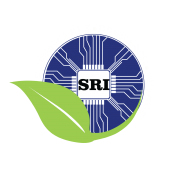Blog - Symbiosis of Sustainability, Nature, Conservation, Carbon Footprints, and Education: Cultivating a Green Legacy
As we navigate the complex web of sustainability, nature, conservation, and carbon footprints, education emerges as a powerful catalyst for change. The intertwining of these elements creates a holistic narrative, weaving together knowledge, awareness, and action to foster a green legacy for generations to come.
- Educating for Conscious Choices:
Education serves as the cornerstone for fostering a conscious understanding of our impact on the environment. By incorporating sustainability, climate science, and conservation into educational curricula at all levels, we empower individuals to make informed choices that align with ecological harmony. From primary schools to universities, education becomes the foundation for a future generation that values and prioritizes environmental responsibility.
- Sustainable Campuses:
Educational institutions can lead by example in the journey towards sustainability. Implementing eco-friendly practices, reducing energy consumption, and adopting sustainable construction and landscaping strategies contribute to lowering carbon footprints on campuses. Such initiatives not only demonstrate the commitment to sustainability but also serve as educational tools, inspiring students to apply these principles in their own lives.
- Nature-Based Education:
Connecting students with nature fosters a deep appreciation for the environment. Nature-based education programs, outdoor learning experiences, and environmental science curricula instill a sense of stewardship and responsibility. These initiatives go beyond traditional classrooms, nurturing a generation that values the natural world and actively engages in its conservation.
- Research and Innovation:
Educational institutions play a pivotal role in advancing research and innovation for sustainable practices. Encouraging students and faculty to explore solutions for environmental challenges, develop green technologies, and contribute to conservation efforts creates a cycle of knowledge transfer from academia to practical application in the real world.
- Community Outreach and Partnerships:
Education extends beyond institutional boundaries into the wider community. Collaborations between educational institutions, local communities, and environmental organizations amplify the impact of sustainability initiatives. Community outreach programs, workshops, and partnerships bridge the gap between knowledge and action, creating a shared commitment to conservation and carbon reduction.
- Lifelong Learning for Sustainability:
Sustainable education is not confined to academic years but extends into lifelong learning. Promoting a culture of continuous education on environmental issues ensures that individuals remain informed and engaged throughout their lives. This ongoing learning journey equips people with the knowledge to adapt to evolving sustainability challenges and contribute to positive change.
- Global Collaboration for Environmental Literacy:
In an interconnected world, global collaboration is essential for addressing planetary challenges. Education becomes a unifying force, fostering environmental literacy and shared values across borders. International partnerships in research, knowledge exchange, and educational initiatives create a collective effort to mitigate climate change, conserve biodiversity, and reduce carbon footprints on a global scale.
